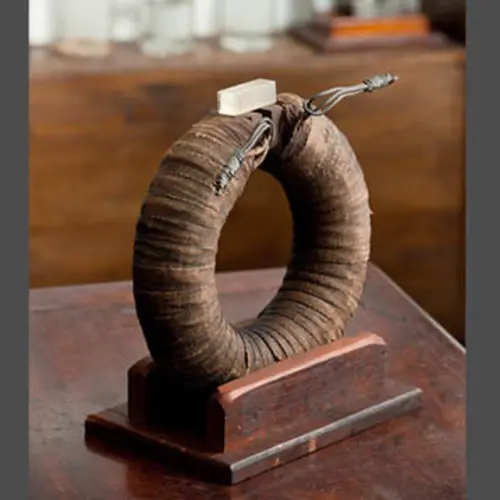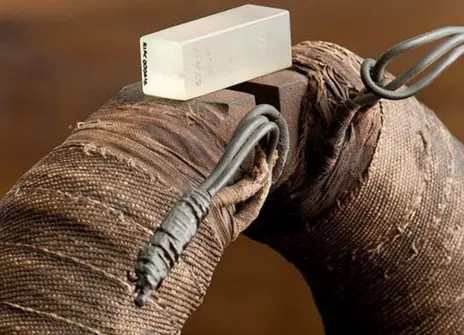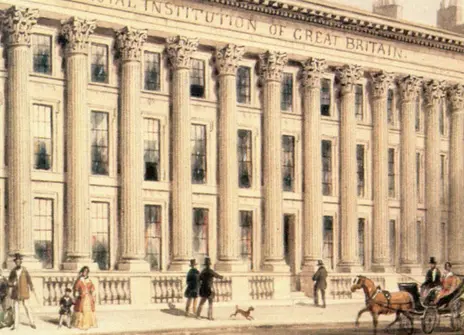Date: 1845
Place made: Basement laboratory of the Ri
Alternative name: Magneto-optical apparatus
Materials: Glass, copper, cotton, iron

Description
Michael Faraday was determined to prove that all matter is magnetic, and that electricity, magnetism and light are similar kinds of things. His experiment was carried out in 1845 in the former servants’ hall in the basement of the Royal Institution’s building in 21 Albemarle Street, London. This is now known as his magnetic laboratory. He placed a dense piece of glass on the poles of the electromagnet, and then passed polarised light (light that travels in a single plane rather than in all directions) through the glass.
When he turned on the electric current, the state of polarisation of the light changed, confirming that both light and glass possessed magnetic properties. He wrote in his notebook: ‘I have at last succeeded in ... magnetising a ray of light’. Now called the ‘Faraday effect’, this was a critical experiment in Faraday’s development of the field theory of electromagnetism, which is one of the cornerstones of modern physics and communication theory.
Where can I view this?
This object is currently on display in the lower ground floor of the Faraday Museum.






